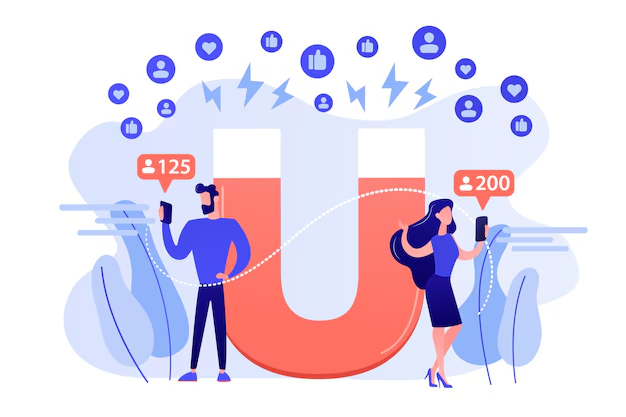
Table of Contents
Mastering Lead Scraping: Tools, Techniques, and Best Practices
In today’s fast-paced digital landscape, effective lead generation is vital for business success. One powerful method for gathering quality leads is lead scraping, which involves extracting contact information from various online sources. This blog delves into the tools available for lead scraping, various methods and techniques, and best practices to ensure ethical and effective implementation.
What is Lead Scraping?
Lead scraping is the automated process of collecting data from websites, social media platforms, and online directories to build a list of potential customers. This data typically includes names, email addresses, phone numbers, company names, and job titles.
By utilizing lead scraping, businesses can identify and engage with prospects who match their target audience, streamlining their marketing and sales efforts.
Benefits of Lead Scraping
- Time Efficiency: Automating the lead generation process saves significant time compared to manual collection.
- Cost-Effective: Reducing the labor involved in gathering leads allows for better allocation of resources.
- Access to a Broader Audience: Scraping can provide insights into potential customers across various platforms, expanding your reach.
- Targeted Marketing: With filtered data, businesses can focus on specific demographics that align with their customer profiles.
Lead Scraping Tools
Several tools are available to facilitate lead scraping, each with its unique features:
- Scrapy: An open-source web crawling framework, Scrapy allows users to build their scraping bots with Python. It’s powerful for those with programming skills and can handle complex scraping tasks.
- Octoparse: A user-friendly, no-code web scraping tool, Octoparse provides a visual interface for building scraping tasks. It’s ideal for users who may not have technical expertise but need to extract data efficiently.
- PhantomBuster: This cloud-based scraping tool specializes in social media and web data extraction. It automates tasks like connecting with LinkedIn leads or extracting information from Facebook.
- Hunter.io: This tool focuses on email scraping. Hunter.io allows users to find and verify professional email addresses associated with specific domains.
- Data Miner: A Chrome extension, Data Miner enables users to scrape data from web pages and save it in various formats, such as CSV or Excel.
Lead Scraping Methods and Techniques
1. Manual Scraping
While time-consuming, manual scraping can be effective for smaller projects. This method involves visiting websites, locating relevant information, and copying it into a spreadsheet. It’s best for gathering data from a limited number of sources where automation tools might not be necessary.
2. Automated Web Scraping
Automated scraping utilizes tools and scripts to extract data without manual intervention. This method is highly efficient for gathering large datasets from multiple sources. Depending on the complexity, users can employ tools like Scrapy or Octoparse to set up scraping jobs that run at scheduled intervals.
3. API Integration
Many platforms offer APIs that provide structured access to their data. Utilizing APIs for lead scraping is often more reliable and ethical than traditional scraping methods. For example, LinkedIn offers API access for specific use cases, allowing businesses to pull lead data in a compliant manner.
4. Email Scraping
Email scraping focuses on collecting email addresses from websites, social media, and directories. Tools like Hunter.io excel in this area by allowing users to search for emails based on company domains or job titles.
5. Social Media Scraping
Social media platforms are rich sources of lead data. Tools like PhantomBuster enable users to automate tasks such as extracting profiles from LinkedIn or gathering contact information from Facebook pages. However, users must be cautious and compliant with the terms of service of these platforms.
6. Web Data Extraction Services
For businesses looking to outsource their lead scraping, there are various web data extraction services available. These services can handle complex scraping tasks and provide the data in a structured format, saving time and effort for the company.
Best Practices for Ethical Lead Scraping
To maximize the benefits of lead scraping while minimizing risks, consider the following best practices:
- Stay Compliant with Regulations: Ensure that your lead scraping practices adhere to laws like GDPR or the CAN-SPAM Act, which regulate data collection and privacy.
- Respect Website Terms of Service: Always check the terms of service for any site you scrape. Violating these terms can lead to legal issues or bans.
- Prioritize User Privacy: Avoid collecting sensitive information without consent. Be transparent about how you plan to use the data.
- Regularly Update Your Data: Maintain the accuracy of your leads by regularly updating your lists to remove outdated or irrelevant information.
- Integrate with CRM Systems: Use Customer Relationship Management (CRM) software to organize and manage the leads you gather, facilitating better tracking and follow-up.
- Test and Optimize: Continuously refine your scraping techniques based on performance metrics and feedback. This iterative approach helps improve lead quality over time.
Conclusion
Lead scraping can be a powerful tool for businesses seeking to enhance their lead generation efforts. By automating the collection of contact information, companies can save time and resources while reaching a broader audience. However, it’s crucial to approach lead scraping ethically, ensuring compliance with legal regulations and respecting user privacy.
By leveraging the right tools and employing effective methods, businesses can successfully harness the power of lead scraping to drive growth and success in a competitive market.




